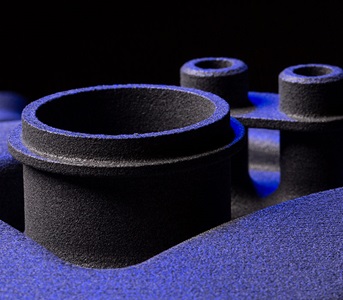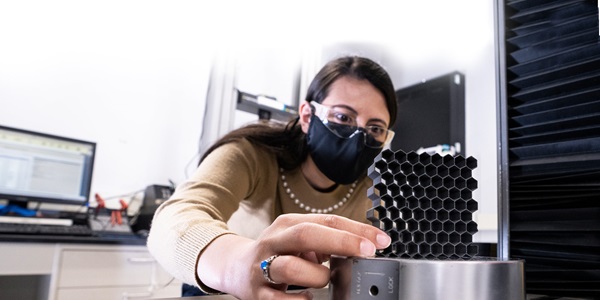Flight Status

By Kelly McSweeney
Advances in composite technology are helping the aerospace industry prepare for increased pressure to get new aircraft out the door and into the skies. Faster manufacturing methods are being invented, right on time, as thousands of commercial aircraft are ageing toward retirement, while simultaneously the demand for more airplanes is growing worldwide. And, as we know, designing and building a new airplane or jet isn't something that can be done overnight.
Aging Airplane Problems Solved with New Technology
"There are thousands of single-aisle aircraft out there that need to be replaced," says Vern Benson, Northrop Grumman Technical Fellow.
He explains that while today's aircraft are built at a rate of 10 to 15 aircraft per month, the next generation will need to be made at a rate of 60 to 100 aircraft per month to replace the aging aircraft and keep up with the rising demand for air travel. In other words, aerospace manufacturers will need to produce components and assemble airplanes at approximately six times the rate they do today.
That's why Benson and his team are inventing new solutions to increase the rate of building aircraft components. The latest focus is on aircraft stiffeners, which are a bit like a skeleton supporting the skin of the aircraft. The challenge is to increase the rate of manufacturing without adding weight or cost to the existing baseline structures.
"Anytime you have to get something off the ground, weight becomes very critical," Benson says. He went on to explain that previous generations of aircraft were mostly made of metal, while newer versions are approximately 50% composite materials, with an even higher percentage of composites for military aircraft. Composites in general offer strength to weight ratio improvements over metals for aircraft components and have other advantage including but not limited to: corrosion resistance, noise reduction, improved fatigue life and design flexibility.

Digital Thread Ensures Invention Works as Designed
"We are providing lightweight, high-performance composite structures, the disadvantage being that composites materials in their raw form are generally more expensive than their metal counterparts," he says. "In order to compete with metals, we have to be highly automated in our manufacturing process."
The old way of building aircraft stiffeners involved manual labor. It can take tens to hundreds of layers of composite material to create stiffeners, the layers being similar to reinforced tape. Technicians would lay strips of the material down over a mold and carefully massage them down to get the material to conform to the correct shape without any bridging, wrinkles or distortion among the layers. It was painful and time consuming.
To address those costly manual problems, Benson and his team invented an automated stiffener forming (ASF) process. Now, an ASF machine makes those stiffeners automatically; laminating, forming and compacting the layers to remove any bulk.
"It’s a fully automated process where we have a digital thread in a computer-controlled machine," he says. "The computer knows when to start and stop to apply the plies. It dispenses the right material to the right location, and then all of the forming systems are programmed to actuate and land at the right place at the right time to form and compact the material as it is applied to the tool."
As a seasoned mechanical engineer holding multiple patents, Benson has made a longstanding impact on the aerospace industry.
"It's a privilege and an honor to be named as a Northrop Grumman fellow," he says. "The role of a fellow is problem solving, intellectual property creation and capture, mentoring of engineers and the industry, and providing vision for new business opportunities."
More Innovation Stories
Read all stories about advanced technology and innovation >>


